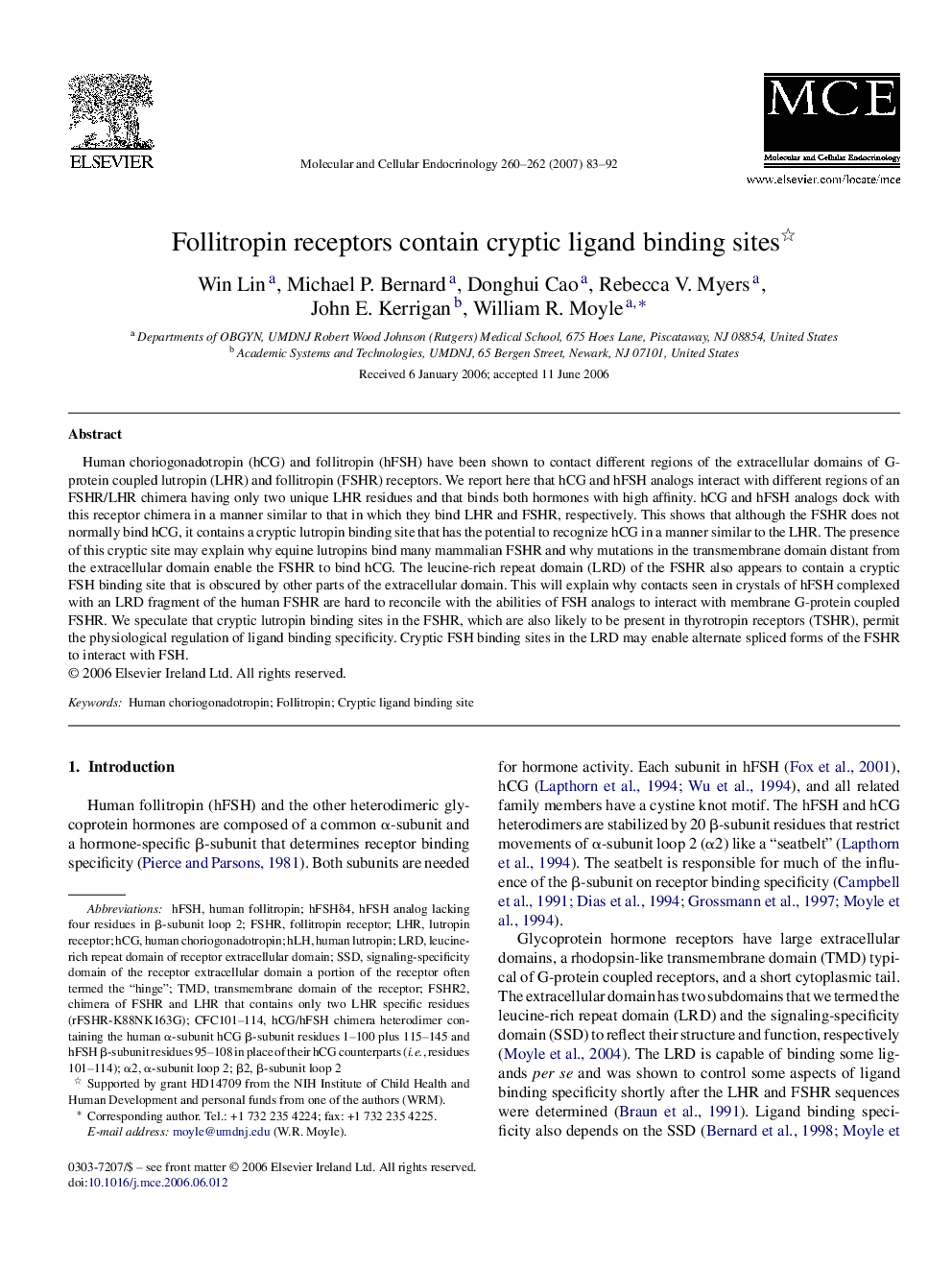| Article ID | Journal | Published Year | Pages | File Type |
|---|---|---|---|---|
| 8478244 | Molecular and Cellular Endocrinology | 2007 | 10 Pages |
Abstract
Human choriogonadotropin (hCG) and follitropin (hFSH) have been shown to contact different regions of the extracellular domains of G-protein coupled lutropin (LHR) and follitropin (FSHR) receptors. We report here that hCG and hFSH analogs interact with different regions of an FSHR/LHR chimera having only two unique LHR residues and that binds both hormones with high affinity. hCG and hFSH analogs dock with this receptor chimera in a manner similar to that in which they bind LHR and FSHR, respectively. This shows that although the FSHR does not normally bind hCG, it contains a cryptic lutropin binding site that has the potential to recognize hCG in a manner similar to the LHR. The presence of this cryptic site may explain why equine lutropins bind many mammalian FSHR and why mutations in the transmembrane domain distant from the extracellular domain enable the FSHR to bind hCG. The leucine-rich repeat domain (LRD) of the FSHR also appears to contain a cryptic FSH binding site that is obscured by other parts of the extracellular domain. This will explain why contacts seen in crystals of hFSH complexed with an LRD fragment of the human FSHR are hard to reconcile with the abilities of FSH analogs to interact with membrane G-protein coupled FSHR. We speculate that cryptic lutropin binding sites in the FSHR, which are also likely to be present in thyrotropin receptors (TSHR), permit the physiological regulation of ligand binding specificity. Cryptic FSH binding sites in the LRD may enable alternate spliced forms of the FSHR to interact with FSH.
Keywords
Related Topics
Life Sciences
Biochemistry, Genetics and Molecular Biology
Cell Biology
Authors
Win Lin, Michael P. Bernard, Donghui Cao, Rebecca V. Myers, John E. Kerrigan, William R. Moyle,
